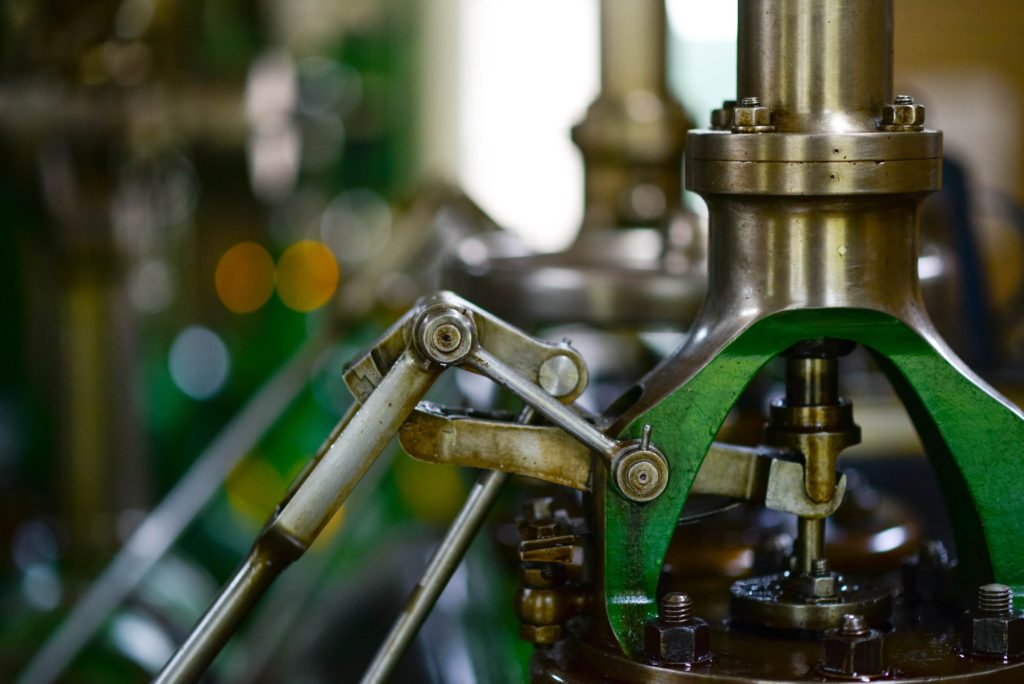The manufacturing industry is undergoing a significant transformation as it embraces new technologies that hold the potential to revolutionize traditional production processes. Manufacturers are increasingly adopting sophisticated solutions such as artificial intelligence (AI), virtual reality (VR), and machine learning (ML).
In this post, we will delve into five key manufacturing technology trends that are shaping the future and providing manufacturers with novel solutions for enhancing quality, productivity, and overall operational excellence.

Five trends to watch in manufacturing technology
Additive Manufacturing
Additive manufacturing, often referred to as 3D printing, is a production process that makes it possible to produce complex shapes and components with greater accuracy and efficiency than ever before. To create an object in additive manufacturing, CAD models are used to successively build a three-dimensional object by adding materials layer-by-layer.
AM makes it possible to fabricate parts quickly and efficiently from metal, ceramics, plastics, concrete, composites, and other materials with very little waste compared to traditional subtractive manufacturing methods.
Advantages of additive manufacturing
- Additive manufacturing helps save energy and money. It works by adding material layer by layer until the part is done which results in minimal waste.
- Making prototypes with additive manufacturing is faster and costs less money as compared to making them using a CNC milling machine.
- Additive manufacturing helps manufacturers save space. They can keep information about parts on the internet and whenever they need a part, they can print it out.
Examples of how it is being used in industry
- The medical industry is using additive manufacturing to deliver breakthroughs to doctors, patients, and research institutions.
- Automotive suppliers and companies are using additive manufacturing to develop consolidated, lightweight components that lead to more efficient vehicles.
- Consumer product manufacturers are using additive manufacturing for producing detailed consumer electronics early in the product development life cycle with realistic aesthetics and functionality.
Automation and Robotics
Automation and robotics in the manufacturing industry use computers, control systems, and information technology to automate the production process. By doing so they eliminate manual labor that can be tedious and inefficient.
Automated processes are essential for today’s rapidly changing industry where faster production cycles mean a lower cost of goods and increased efficiency. This automation also improves quality by allowing for better accuracy and precision when making products.
Automation and robotics provide much-needed assistance in the hectic manufacturing environment as they can help to keep up to speed with high demand while maintaining or even improving the quality of products.
Benefits of automation and robotics for manufacturers
- Robots can help manufacturers make their factories more efficient. They work without taking breaks and can keep going for 24 hours each day.
- Industrial robots are made to do versatile things. With automation, manufacturers can use robots for different jobs and tasks. They can move them around, change what they do or repurpose them.
- Robots can do more work in a shorter time. It can save in manufacturing costs up to 60%.
How automation can improve safety in the workplace
Automation can improve safety in the workplace in two major ways. Firstly, it can take on physically demanding or dangerous tasks that could hurt people, freeing up employees from having to face these risks.
Second, automated systems often feature enhanced safety precautions that are more comprehensive than when performed by humans. This means employees can focus on other areas of their job knowing the machine is taking care of those difficult tasks for them safely and accurately.
Data Analytics and Artificial Intelligence
In the manufacturing industry, data analytics is being used to unlock the full potential of artificial intelligence (AI). This technology helps us understand the impact of our decisions on product quality, production costs, and customer satisfaction.
With an understanding of what AI can provide and how it can be applied in the manufacturing process, manufacturers can optimize operations and simplify complex processes.
Data analytics gives a clear picture of how current activities affect production. This knowledge is used by manufacturers to identify improvement opportunities that may have otherwise gone unnoticed.
Examples of using data analytics to improve manufacturing processes
- Process manufacturers are using data analytics to check the ingredients in chemicals, minerals, and other raw materials. This helps them make sure that they have enough of each ingredient to meet their production requirements.
- Precious metals mines use data from different processes to learn about how changes in those processes affect the final product. For example, they might look at how changes in oxidation and grinding affect the quality of ore.
- Manufacturers use AI to make sure their machines stay operational for long term. They use the data to help predict when parts might break down so they can fix them before they cause problems.
Potential applications for AI in manufacturing
- Collaborative robots, sometimes called cobots, help people do their work. They are like extra hands for the job.
- AI systems use machine learning algorithms to detect buying behavior and this provides manufacturers with insights into buying trends.
- AI can is being used to help with supply chains in manufacturing. Large companies have lots of orders and materials to manage, which can take a lot of time and energy. To save time, some companies are using AI to help with these processes.
Cybersecurity
Cybersecurity in the manufacturing industry involves both protecting data and mitigating operational risks across the sector and its associated networks, devices, and systems.
It must be addressed through rigorous measures that include robust authentication policies, strong encryption protocols, reliable data management procedures, and other security approaches that safeguard against malicious attacks.
The manufacturing industry is operating in an increasingly complex digital age; cybersecurity efforts provide a necessary layer of protection for data confidentiality and operational continuity.
Challenges associated with cybersecurity in the manufacturing sector
- Lack of C-suite focus is a major challenge in this industry; many leaders are hesitant to dedicate resources to cybersecurity measures due to perceived costs and complexity.
- Small manufacturers do not have enough money or technology to protect their data and systems from attacks. Without the right protection, their data can be easily compromised.
- Employees in manufacturing companies are least aware of the latest security innovations or best practices, leaving a company vulnerable to malicious actors.
Steps companies are taking to secure their systems
- Different types of data are used for different parts of a company. For example, salespeople do not need to see payroll information. Companies need to make sure that their data is safe by only letting relevant people access it.
- Trust between manufacturers and customers is very important. Everyone needs to feel safe when they share private information. That’s why manufacturers should make a privacy policy that explains the rules in clear language so everyone understands it.
- To make sure data is safe in a manufacturing company, strong passwords should be used, that have at least 10 characters and include letters, numbers, and symbols.
The Internet of Things (IoT)
The Internet of Things are objects having sensors, computers, and other technology that can communicate with each other over the Internet. It is drastically changing the manufacturing industry by allowing for improved and efficient management of machinery, inventory, and energy.
These capabilities lead to reduced operational costs for manufacturers as well as the creation of new sources of revenue. It has enabled manufacturers to get smarter and more efficient in the way they run their business than ever before.
Benefits of IoT for manufacturers
- Automated data collection through IoT devices provides more accurate and efficient information than traditional methods.
- By using IoT devices, manufacturers can improve productivity by increasing machine utilization and freeing up manpower to execute other duties.
- Connecting machines on the factory floor with IoT provides real-time production tracking and holistic visibility into shop floor processes.
Potential uses of IoT in production and operations management
- IoT is being used in asset management. It uses special machines to do this, like PLCs with codes that can detect problems and batteries that use less energy to connect on older lines.
- It is helping manufacturers to reduce the faults and shortcomings in their final product by replicating the developing product in a digital form. Retrofitting sensors help to gather data about the equipment’s working mechanism and expected output.
- It is helping with predictive maintenance. It records data from sensors and devices to show the current condition of the equipment. It can warn you about problems and save time on sudden issues with equipment.
Conclusion
As trends in manufacturing technology rapidly evolve and improve, we’ll continue to see this sector innovate & transform. This means businesses must stay ahead of trends within the industry or else they risk getting left behind.
With the five trends discussed above, the pace of innovation will likely only increase. Companies need to recognize these trends and how they can leverage each in order to survive & thrive in the long run.
It’s possible that these five trends may represent just part of the story for technology-driven change within manufacturing, understanding what’s coming next is key to creating comprehensive strategies in the manufacturing industry that ensure success. To learn more about how Silver Tree works with manufacturing and product companies to leverage technology into a competitive advantage, contact us here.


